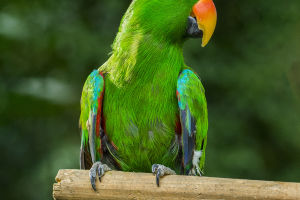In our wanderings through the forested trails near water sources in Southeast Asia, we may encounter a breathtaking burst of blue light and the piercing call of the Blue-eared Kingfisher.
While this avian beauty might not be a household name, its relative, the Common Kingfisher (Alcedo atthis), holds a well-known status.
Both these kingfishers belong to the Kingfisheridae family within the order Coraciiformes and share remarkable similarities in size and coloration: petite birds with elongated beaks, short tails, and striking blue heads, backs, wings, contrasted by vibrant orange breasts and bellies.
The Common Kingfisher, which is usually no bigger than a sparrow, uses a distinctive hunting technique. Despite its relatively small size, it targets disproportionately substantial prey. When the prey is too large to swallow in one gulp, it performs a ritualistic "wrestling" maneuver.
This strategic wrestling helps ensure that the prey dies or at least loses consciousness before ingestion, minimizing the risk of swallowing a struggling victim. Additionally, this method aids in breaking the bones of the prey, making them easier to swallow.
Even larger kingfisher species display the wrestling hunting behavior seen in the Common Kingfisher.
Fish and shrimp are common items on the menu of Kingfishers. Due to the sharp spines in their fins and forward-facing swords and chelicerae, both require careful handling to avoid getting stuck. When consuming a fish, the Kingfisher skillfully positions the fish in its mouth with the head toward the throat before slowly and deliberately swallowing it.
During this process, the fins naturally fold towards the tail, preventing obstruction in the mouth and esophagus. Shrimp, on the other hand, are ingested starting with the tail to accommodate their frontal swords and chelipeds facing forward.
Notably, kingfishers display remarkable dining etiquette even when feeding their young, ensuring the head and tail of the fish are presented first.
After a hearty meal, kingfishers regurgitate indigestible elements in the form of "food pills." These pellets primarily consist of fish spines, insect exoskeletons, or bones from other vertebrates.
Similar to its common cousin, the Blue-eared Kingfisher boasts stunning 'cobalt blue' feathers on its back, making it a dazzling spectacle when soaring low, resembling a sparkling sapphire.
The habitat preferences of the kingfisher family are more diverse than one might assume, extending beyond mere fish-laden puddles. For example, the Common Kingfisher prefers open rivers, reservoirs, fishponds, and park ponds.
The Southern Common White-breasted Emerald not only frequents watery areas but also hunts insects and small reptiles in fields. Meanwhile, Southeast Asia's Common Red Emerald (Halcyon coromanda) and Brown-winged Emerald have strong affinities for coastal mangrove forests.
In the world of kingfishers, stunning appearances and fascinating hunting techniques abound, showcasing the wonders of nature's diversity and adaptability.
These birds, whether through their vibrant plumage or distinctive feeding behaviors, continue to captivate nature enthusiasts across the globe.
In the enchanting realm of kingfishers, nature unfolds a tapestry of beauty and intrigue. The Blue-eared Kingfisher, though not as renowned as its common counterpart, stands as a symbol of the family's captivating diversity.
With their petite statures, elongated beaks, and vibrant plumage, these avian wonders navigate the lush landscapes of Southeast Asia.


